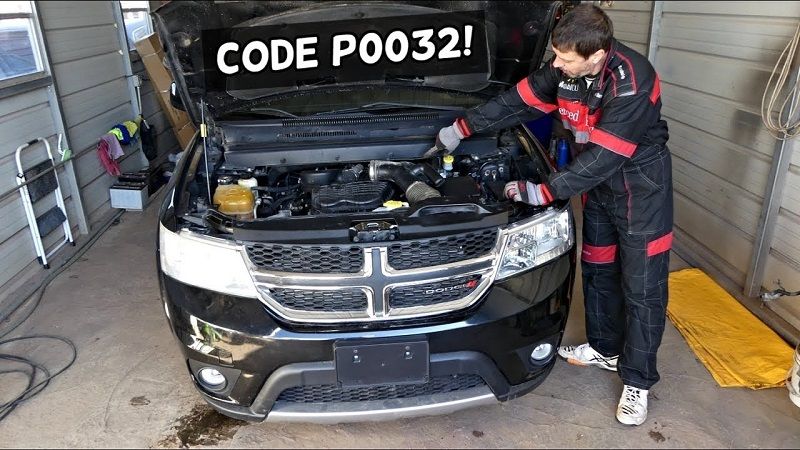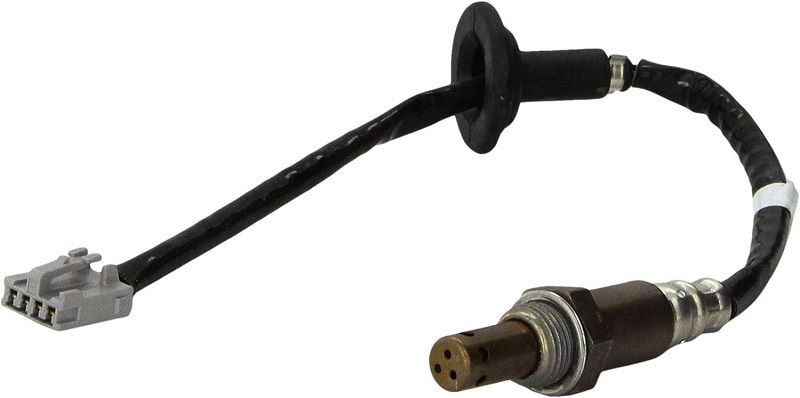This post contains affiliate links. This means I will make a commission at no extra cost to you should you click through and make a purchase [ “As an Amazon Associate, I earn from qualifying purchases.” ]. Read the full disclosure here.
P0032 HO2S Heater Control Circuit High (Bank 1 Sensor 1): Causes, Diagnosis, and Solutions GuideMechanic.Com The P0032 trouble code is a diagnostic code that relates to a malfunction in the Heated Oxygen Sensor (HO2S) Heater Control Circuit for Bank 1 Sensor 1.
While this may sound complex, understanding its causes, diagnosing the issue, and resolving it can help ensure your vehicle’s optimal performance and emission levels.
In this comprehensive guide, we’ll delve into the intricacies of the P0032 code, offering insights into its implications and the steps necessary to address it effectively.
See Also: P0030 HO2S Heater Control Circuit (Bank 1 Sensor 1)
P0032 HO2S Heater Control Circuit High (Bank 1 Sensor 1)
Understanding the P0032 Code:

Before diving into the specifics of the P0032 code, it’s essential to grasp its fundamental components. The “P” prefix indicates that it’s a Powertrain code, relating to components such as the engine and transmission.
“0032” is the specific trouble code, signaling an issue with the HO2S Heater Control Circuit. This circuit is responsible for heating the oxygen sensor to operating temperature quickly, ensuring accurate readings and optimal engine performance.
Bank 1 Sensor 1:
The term “Bank 1” refers to the side of the engine where the number 1 cylinder is located. In vehicles with inline engines, there’s typically only one bank.
However, in V-configured engines, there are usually two banks, with Bank 1 housing the cylinder containing the number 1 piston.
“Sensor 1” denotes that it’s the first oxygen sensor in the exhaust system, positioned before the catalytic converter. This sensor plays a crucial role in monitoring the air-fuel mixture and adjusting engine parameters accordingly.
P0032 HO2S Heater Control Circuit High (Bank 1 Sensor 1)
Causes of P0032 Code:
Several factors can trigger the P0032 trouble code, including:
Faulty Oxygen Sensor Heater:
A malfunctioning heater element within the oxygen sensor can cause it to heat excessively, leading to the P0032 code.
Wiring Issues:
Broken wires, shorts, or corroded connections in the oxygen sensor heater circuit can disrupt the proper operation of the heater, resulting in the code.
ECM Malfunction:
In rare cases, a malfunctioning Engine Control Module (ECM) may fail to regulate the voltage supplied to the oxygen sensor heater, leading to overheating and the P0032 code.
Exhaust Leaks:
Leaks in the exhaust system near the oxygen sensor can expose it to excessive heat, causing the heater circuit to trigger the P0032 code.
P0032 HO2S Heater Control Circuit High (Bank 1 Sensor 1)
Diagnosing P0032:
Check out this Denso 234-4516 OE Heated 4-Wire Downstream Oxygen Sensor 15.75”
Diagnosing the P0032 code typically involves a systematic approach to pinpointing the exact cause. Here are the steps involved:
Code Scan:
Utilize an OBD-II scanner to retrieve the trouble code and any accompanying freeze frame data. This information can offer valuable insights into when the fault occurred and under what conditions.
Visual Inspection:
Conduct a visual inspection of the oxygen sensor wiring harness and connector for signs of damage, corrosion, or loose connections. Additionally, inspect the exhaust system for any leaks near the oxygen sensor.
Check Heater Resistance:
Using a multimeter, measure the resistance of the oxygen sensor heater. Compare the reading to the manufacturer’s specifications. An abnormally high resistance may indicate a faulty heater element.
Inspect Wiring:
Thoroughly inspect the wiring harness for any signs of damage, such as fraying, cuts, or burns. Repair or replace any damaged wiring as necessary.
Test Heater Voltage:
With the engine running and at operating temperature, use a voltmeter to check for voltage at the oxygen sensor heater connector. Excessive voltage may indicate a malfunctioning ECM.
Scan Tool Data Analysis:
Utilize a scan tool to monitor live data while the engine is running. Pay close attention to oxygen sensor data, particularly the Bank 1 Sensor 1 heater operation.
P0032 HO2S Heater Control Circuit High (Bank 1 Sensor 1)
Fixing P0032:
Once the underlying cause of the P0032 code has been identified, appropriate measures can be taken to address it effectively:
Replace Oxygen Sensor:
If the oxygen sensor heater is found to be faulty, replace the sensor with a new, high-quality unit. Ensure that the replacement sensor meets or exceeds OEM specifications.
Repair Wiring:
If wiring issues are detected, repair or replace the damaged wiring in the oxygen sensor heater circuit. Properly solder and insulate connections to prevent future issues.
Address Exhaust Leaks:
If exhaust leaks are present near the oxygen sensor, repair them promptly to prevent exposure to excessive heat.
ECM Replacement:
In rare cases of ECM malfunction, replace the engine control module with a new or remanufactured unit. Ensure that the replacement ECM is correctly programmed for your vehicle.
Clear Codes:
After completing repairs, use the OBD-II scanner to clear the trouble codes and reset the ECM. Conduct a test drive to ensure that the P0032 code does not reappear.
Conclusion:
See Also: P0031 HO2S Heater Control Circuit Low (Bank 1 Sensor 1)
The P0032 trouble code relating to the HO2S Heater Control Circuit High on Bank 1 Sensor 1 is a common issue encountered by vehicle owners.
By understanding its causes, following a systematic diagnostic approach, and implementing the necessary repairs, you can effectively address the code and restore your vehicle’s optimal performance and emissions compliance.
If you’re unsure about performing these repairs yourself, it’s advisable to seek assistance from a qualified automotive technician to ensure the proper resolution of the issue.
- P0079 Code: Exhaust Valve Control Solenoid Circuit Low (Bank 1) - May 16, 2024
- P0078 Code: Exhaust Valve Control Solenoid Circuit (Bank 1) - May 15, 2024
- P0077 Intake Valve Control Solenoid Circuit High (Bank 1) - May 14, 2024



